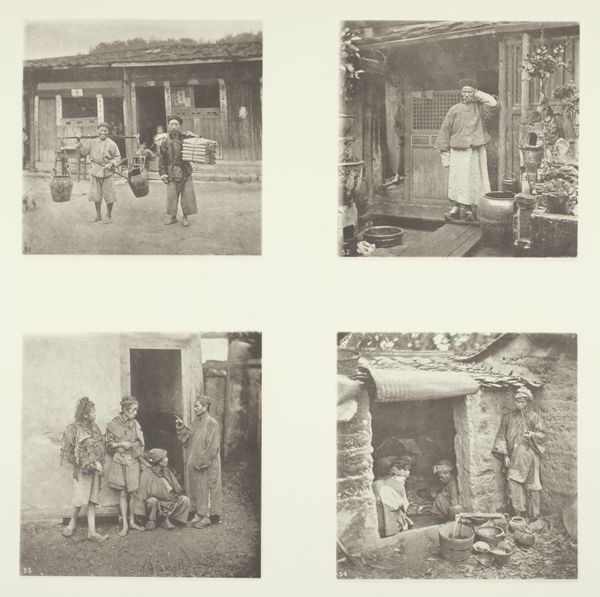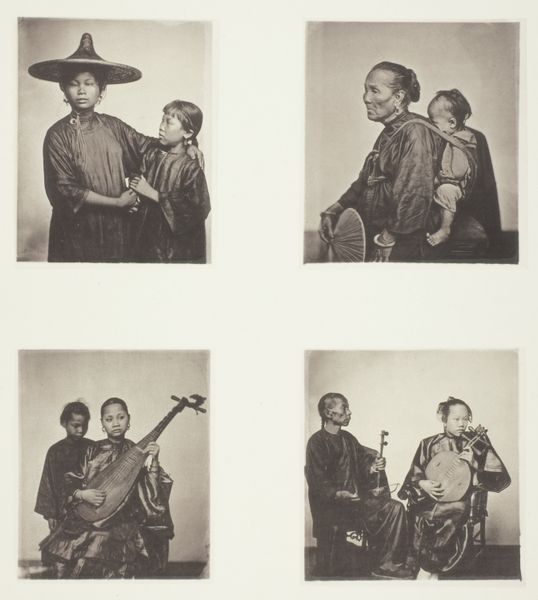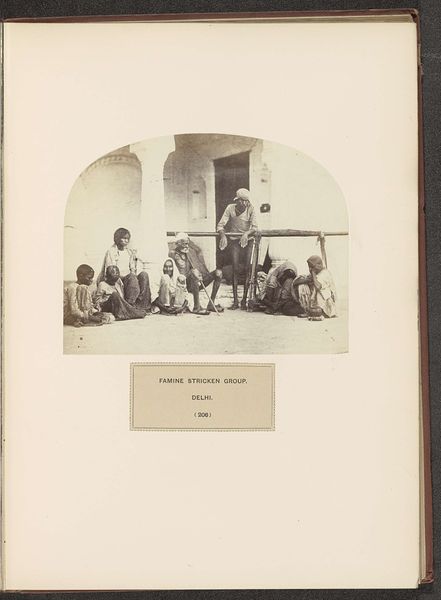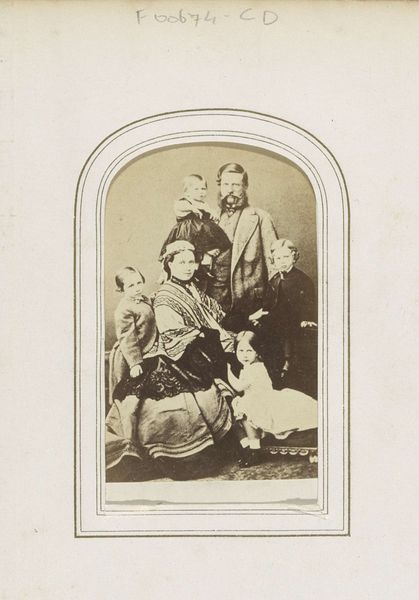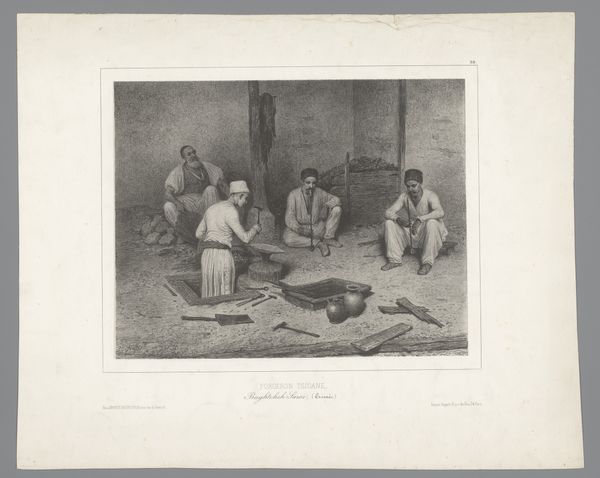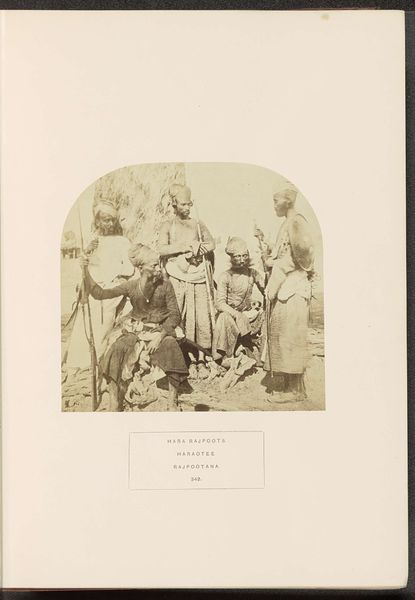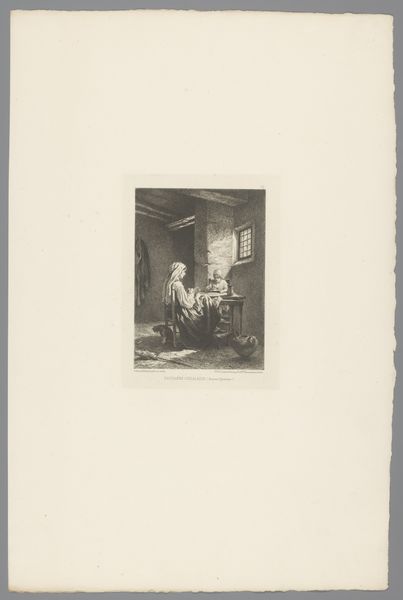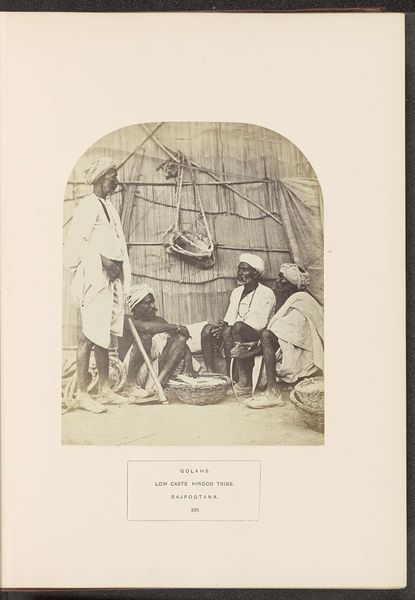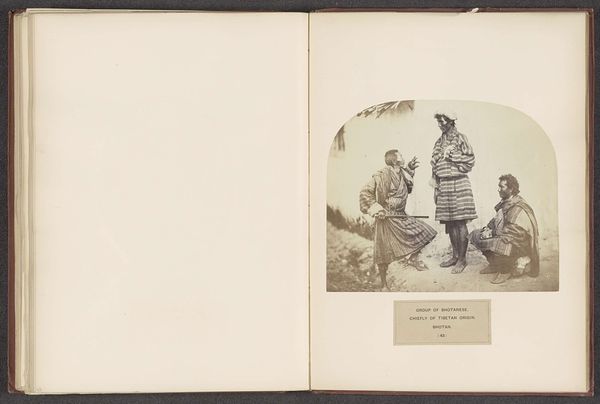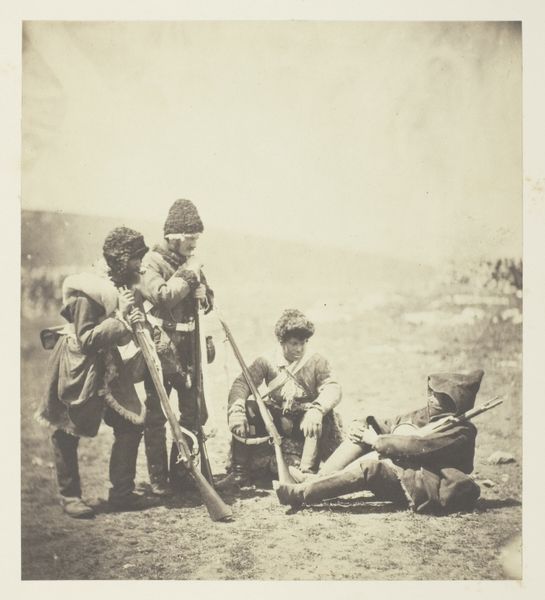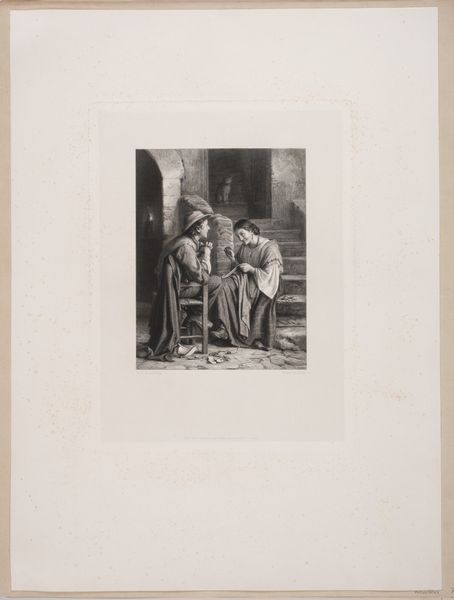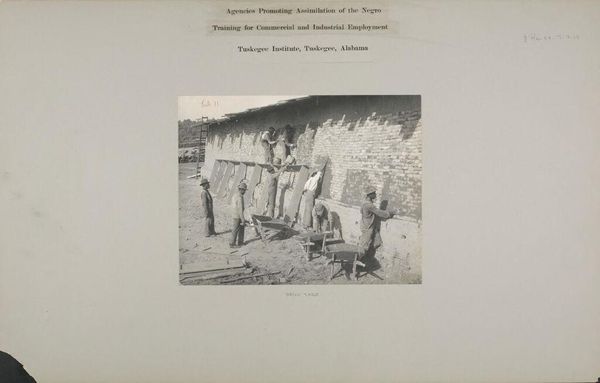
Amoy Women; The Small Foot of a Chinese Lady; Amoy Men; Male and Female Costume, Amoy c. 1868
0:00
0:00
photography
#
portrait
#
african-art
#
16_19th-century
#
asian-art
#
photography
#
realism
Dimensions: 11.3 × 11.5 cm (upper left image); 11.3 × 12.7 cm (upper right image); 11.9 × 11.7 cm (lower left image); 11.9 × 12.6 cm (lower right image); 47.2 × 34.9 cm (album page)
Copyright: Public Domain
Editor: This is "Amoy Women; The Small Foot of a Chinese Lady; Amoy Men; Male and Female Costume, Amoy," a set of photographs by John Thomson from around 1868, held at the Art Institute of Chicago. They seem incredibly intimate, a window into a world and culture I know very little about. What catches your eye in these images? Curator: It's a composite photograph with four distinct views offering diverse glimpses into 19th-century Amoy society. What intrigues me most is Thomson's seemingly unfettered access. Consider, for instance, the close-up study of the bound foot; its significance speaks volumes about societal pressures and beauty standards. Editor: It’s quite a statement, isn’t it? The other images appear as posed portraits, while the foot feels almost…clinical. What do you make of that contrast? Curator: It begs the question of authenticity and representation, doesn't it? The formal portraits adhere to Western expectations of ethnographic photography, meticulously documenting dress and posture. However, the image of the foot disrupts this veneer, revealing something raw, corporeal. Do you find it jarring? Editor: Absolutely! It’s almost voyeuristic compared to the others. But does that rawness also lend it a strange kind of honesty, even if it is uncomfortable? Curator: Perhaps. Photography, particularly in that era, had this paradoxical ability to both document and distort reality. Thomson’s gaze, as a Western photographer, inevitably shapes our understanding, even with a picture as intimate as the bound foot. What does "realism" even mean in this context? Editor: I suppose it is impossible to view this as unmediated reality, no matter how revealing it may seem on the surface. Curator: Exactly! It’s a reminder that every image is a constructed narrative, a dialogue between the photographer, the subject, and, ultimately, the viewer, generations later. Editor: Food for thought; these images certainly stick with you! Thanks!
Comments
No comments
Be the first to comment and join the conversation on the ultimate creative platform.

